 Stephanie Ferguson
Stephanie Ferguson
Director, Global Employment Policy & Special Initiatives, U.S. Chamber of Commerce
Published
August 25, 2022
As businesses continue to grapple with a national workforce shortage, one source for talent employers should consider is people with disabilities. Businesses can give themselves a competitive edge and demonstrate their commitment to diversity and inclusion.
Our America Works Data Center captures national workforce trends and the talent pools that make up our labor force. This data deep dive examines the relationship between employers and job seekers with disabilities and neurodivergence.
Millions of individuals with disabilities looking for work remain unemployed.
The Americans with Disabilities Act (ADA), signed into law in 1990, defines what constitutes a disability, protects the rights of individuals with disabilities, and prohibits discrimination.
The ADA defines disabilities as a physical or mental impairment that substantially limits one or more major life activities. Thirteen percent of all Americans, and one in four adults, have a disability.
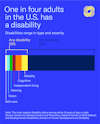
When it comes to the workplace, the ADA provides a balanced approach in ensuring that job seekers with disabilities can gain suitable employment. Specifically, employees must be able to perform job duties with or without accommodation, and employers are required to provide reasonable accommodations to qualified individuals with disabilities, except in cases when the accommodation would cause undue hardship.
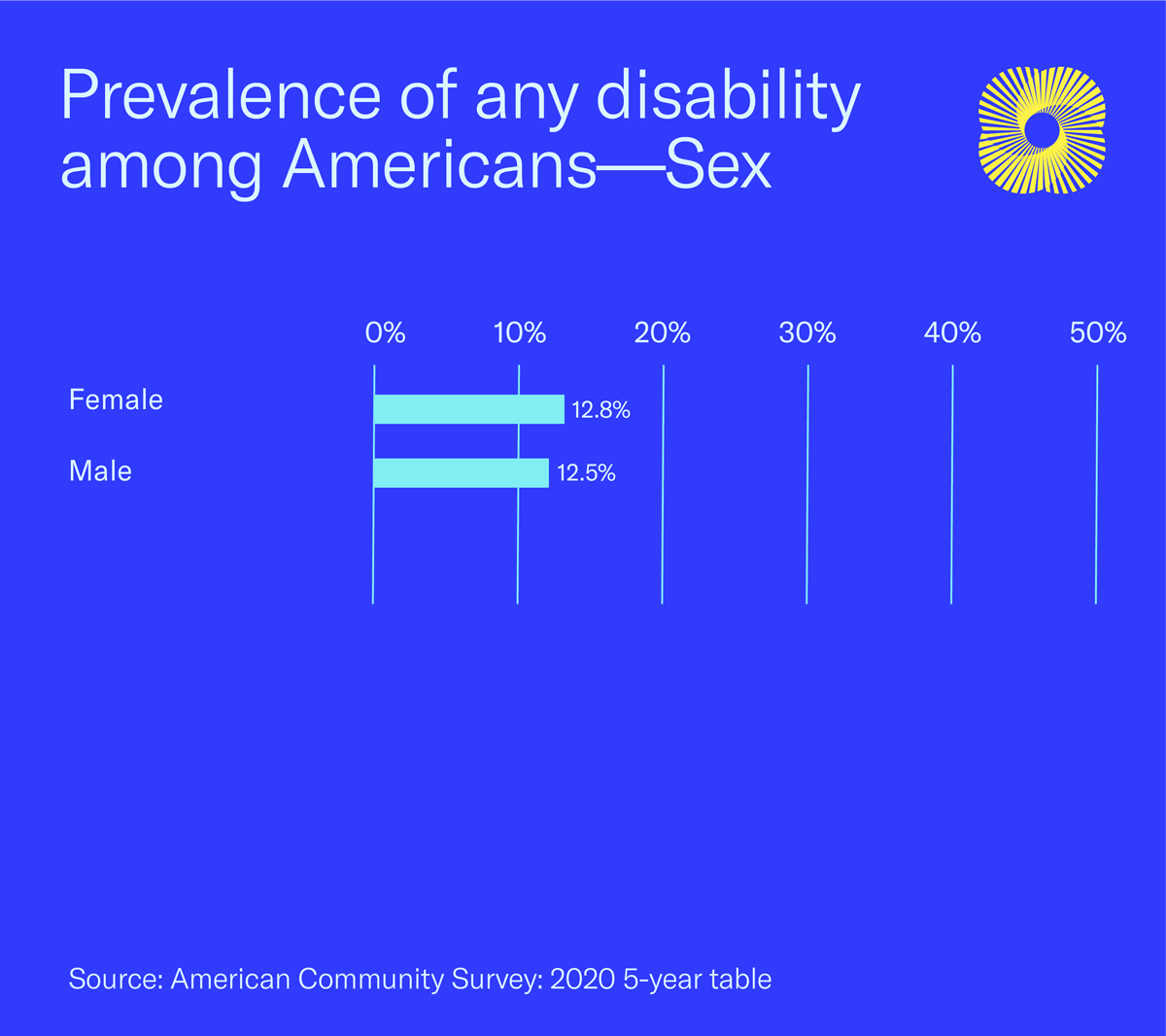
Yet despite ADA protections, federal tax incentives, and private sector opportunity programs, millions of individuals with disabilities looking for work remain unemployed.
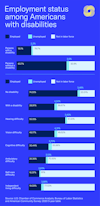
Individuals with disabilities cite several barriers to employment.
While most respondents cite their disability as a barrier to employment, other hurdles include a lack of education and training, and a lack of transportation. These are barriers that can be addressed through workplace accommodations like increased time in training or modifications to equipment.
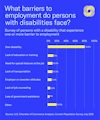
-
14.5%
Employees with disabilities who request workplace accommodations
-
6.7%
Employees without disabilities who request workplace accommodations
While Americans with disabilities request workplace accommodations at a higher rate than their counterparts without disabilities, all employees request certain workplace accommodations quite regularly. Even so, studies show that providing accommodations for employees with disabilities often costs very little.
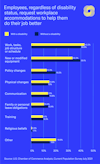
Innovative workplace accommodations have increased employment opportunities for individuals with disabilities.
Individuals with disabilities work in all industries, and at roughly equal rates compared to individuals without disabilities. Innovative workplace solutions and basic accommodations provided by employers have increased employment opportunities in all industries. Investing in workplace accommodations and recruiting more employees with disabilities also provides a great return on investment. In a recent study, companies with the most inclusive workplaces for employees with disabilities experienced nearly 30% higher revenues and greater economic profits.
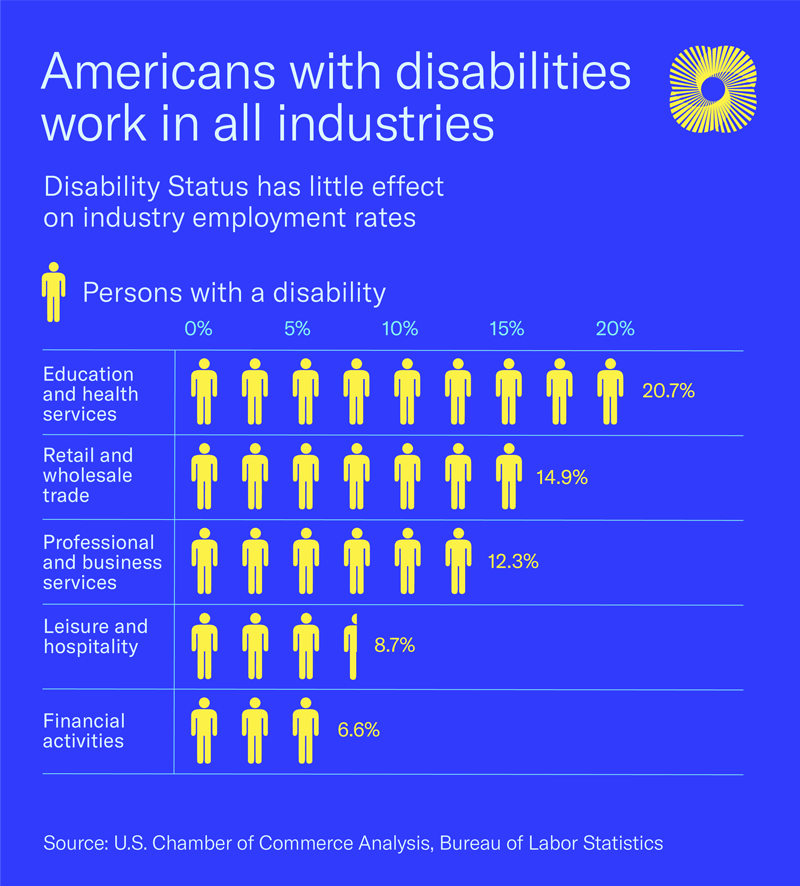
However, difficulty in the workplace does exist for many individuals with disabilities despite inclusive and accessible environments. According to the Bureau of Labor Statistics (BLS), more than half of employed persons with a disability reported that their disability caused some difficulty in completing their current work duties in July 2021.
It is important to note, though, that of those citing difficulty, having severe difficulty is not common. Many say they have just a little bit to moderate difficulty completing work tasks.
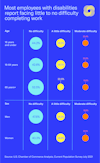
Accommodating individuals with neurodivergence is common in the workplace.
Workplace accommodations for individuals who are neurodivergent is already a tried-and-true practice in companies’ HR departments. Neurodivergence is an umbrella term that is now being commonly used to describe individuals with autism spectrum conditions, attention deficit/hyperactivity disorder, and dyslexia, to name a few.
Put simply, neurodivergence causes people to experience and respond to their environment in ways differently than a neurotypical person might. Many businesses are accustomed to hiring individuals with neurodivergence and providing accommodations.
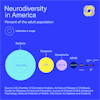
Neurodivergent conditions are not deficits, but some conditions may require some adjustments in the workplace. By understanding, accepting, and hiring individuals with disabilities and neurodivergence, businesses can remain competitive and improve diversity and inclusion efforts.
More businesses being willing to provide simple workplace accommodations can make a big difference in expanding our workforce and helping companies fill open jobs.
See our resources for fostering an inclusive workplace for employees with disabilities and neurodivergence:
Resources
The U.S. Chamber has a long, supportive history with the Americans with Disabilities Act and the Equal Employment Opportunity Commission and is committed to the use of respectful and inclusive language and practices.
The U.S. Chamber and U.S. Chamber Foundation are helping employers discover and develop talent through the America Works Initiative. For more information, contact Jenna Shrove at jshrove@uschamber.com.
About the authors

Stephanie Ferguson
Stephanie Ferguson is the Director of Global Employment Policy & Special Initiatives. Her work on the labor shortage has been cited in the Wall Street Journal, Washington Post, and Associated Press.

Isabella Lucy
Isabella has created stunning visualizations tackling pressing issues like the worker shortage, the benefits of hiring veterans, the lifespan of small businesses, and the future of work.





